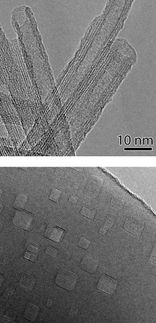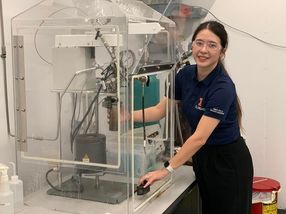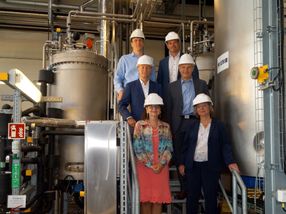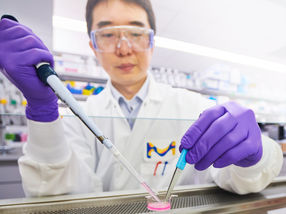Breaking harmful bonds
Brandeis scientists convert the mighty C-F bond
Advertisement
Everybody loves the way breakfast eggs conveniently slide off of Teflon without leaving any pesky pieces of egg in the pan. Indeed, the carbon-fluorine bond at the heart of Teflon cookware is so helpful we also use it in clothing, lubricants, refrigerants, anesthetics, semiconductors, and even blood substitutes. But the very strength of the C-F bond that makes it useful in so many applications also gives it formidable greenhouse gas effects that persist in nature. In a study in Science, Brandeis scientists report they have identified a catalyst that efficiently breaks the C-F bond and converts it to a carbon-hydrogen bond, rendering it harmless to the environment.
Chlorofluorocarbons (CFCs or freons) are harmful to the ozone layer. Hydrofluorocarbons (HFCs) and perfluorocarbons (PFCs) are generating concern because they are considered super-greenhouse gases, with great potential to warm the environment by trapping solar radiation and remaining virtually indestructible in the atmosphere.
"The C-F bond is difficult to transform into other bonds under mild conditions because it is inert and unreactive; it's a challenge to chemists," said lead author chemist Oleg Ozerov, who conducted the research with postdoc Christos Douvris. "But we found a way to take a C-F bond that you can do very little with and break it and convert it cleanly into something else at room temperature."
With research support from the Department of Energy, Sloan Foundation, and Research Corporation, Ozerov identified a new catalytic process for a class of carborane-silylium compounds that causes the bonds in representative HFCs to react at room temperature, swapping their carbon-fluorine bonds for carbon-hydrogen bonds. The silylium catalyst performs the critical task of breaking the C-F bond by abstracting the fluoride from the fluorocarbon and attaching it to a silicon atom. The end product is a compound with a silicon-fluorine bond, which is no longer a greenhouse threat.
This finding could eventually lead to large-scale reactions to convert environmental pollutants that contain C-F bonds into products that could be reused or destroyed without special equipment.
Most read news
Topics
Organizations
Other news from the department research and development

Get the chemical industry in your inbox
By submitting this form you agree that LUMITOS AG will send you the newsletter(s) selected above by email. Your data will not be passed on to third parties. Your data will be stored and processed in accordance with our data protection regulations. LUMITOS may contact you by email for the purpose of advertising or market and opinion surveys. You can revoke your consent at any time without giving reasons to LUMITOS AG, Ernst-Augustin-Str. 2, 12489 Berlin, Germany or by e-mail at revoke@lumitos.com with effect for the future. In addition, each email contains a link to unsubscribe from the corresponding newsletter.



























































